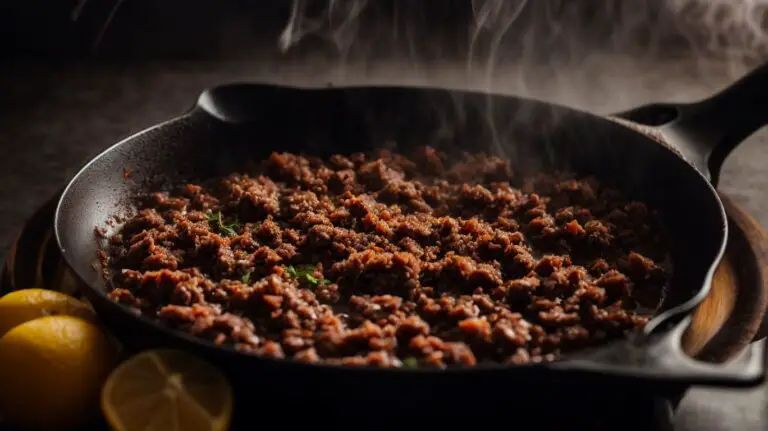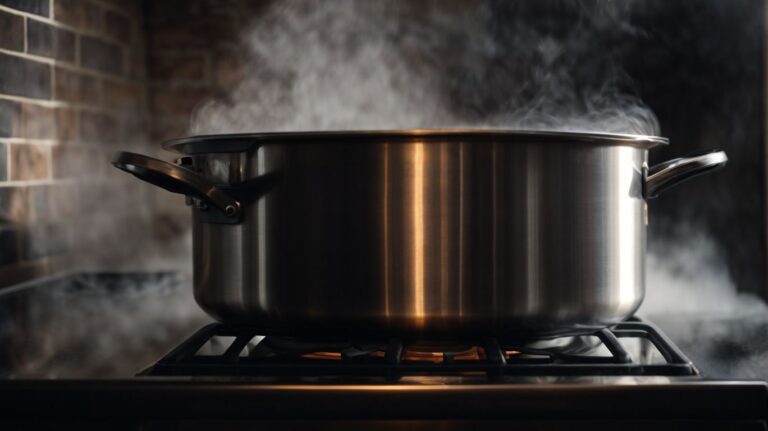How to Cook Perfect Bacon?
Are you a bacon lover looking to elevate your breakfast game? Look no further!
We will explore the secrets to cooking perfect bacon every time. From choosing the right cut of bacon to mastering different cooking techniques, we will cover it all.
Whether you prefer cooking bacon in the oven, on the stove, or in the microwave, we have tips and tricks to help you achieve crispy, delicious bacon.
Plus, we will share creative ways to incorporate perfect bacon into your favorite recipes.
Stay tuned for all the bacon goodness coming your way!
Key Takeaways:
What Makes Bacon Perfect?
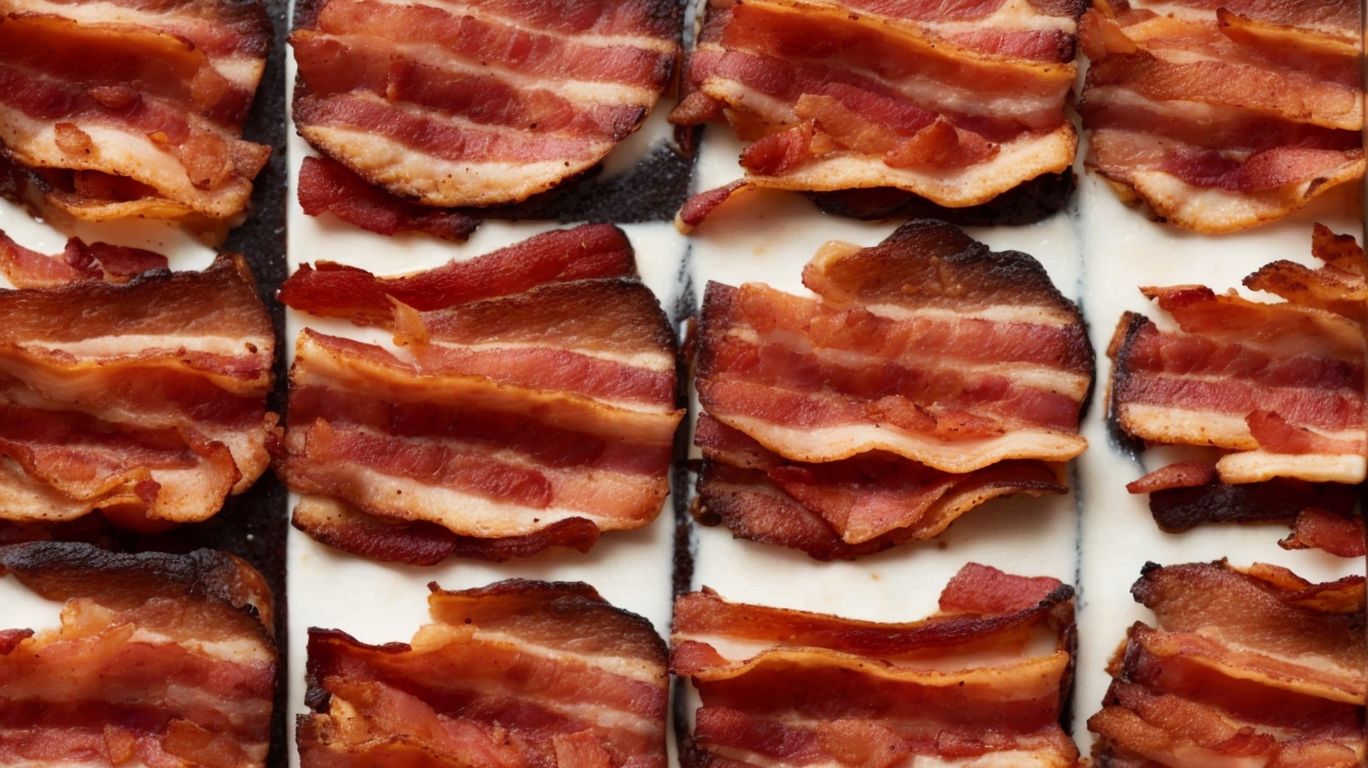
Credits: Poormet.Com – Andrew Perez
Discovering what makes bacon perfect involves understanding the nuances of achieving a crispy and delicious result that tantalizes the taste buds.
One of the key factors in achieving that perfect bacon is the crispiness that comes from cooking it just right. The sizzle and aroma that fill the kitchen as bacon cooks to a golden brown are often accompanied by the anticipation of that first delicious bite. The flavor profile of bacon, whether smoked, maple-glazed, or peppered, adds a depth that makes it versatile for various dishes. The balance between the crisp texture and savory taste is what makes bacon a beloved ingredient in countless recipes.
Choosing the Right Cut of Bacon
Choosing the right cut of bacon is crucial for ensuring that each slice delivers the desired flavor and texture when cooked.
When selecting bacon slices, pay attention to the thickness as thinner slices might become too crispy, while thicker cuts can retain juiciness and provide a more substantial bite. Quality is another key factor to consider; look for bacon with a good balance of meat and fat, as this can enhance both the taste and tenderness of the cooked bacon. Opting for bacon with the right amount of fat content can influence how the bacon renders when cooking, affecting the overall mouthfeel and juiciness of the dish.
Preparing the Bacon
Preparing bacon involves handling the bacon slices with care and managing the rendered bacon grease efficiently, possibly by storing it in a glass jar for future use.
After cooking bacon slices to perfection, the next step is crucial. Carefully transfer the hot bacon strips onto paper towels to allow excess grease to drain off. Use a heat-safe container to collect the bacon grease, making sure to strain out any solid bits. Once the bacon grease cools down, it can be safely stored in a glass jar with a tight-fitting lid to prevent any odors or contamination. Properly labeled, the jar can then be refrigerated for future culinary adventures.
Cooking Techniques for Perfect Bacon
Mastering various cooking techniques is key to achieving perfect bacon that is crispy, delicious, and cooked to perfection.
In terms of oven baking bacon, laying the strips on a wire rack over a baking sheet allows for even heat distribution and results in a crispy texture. On the other hand, stovetop frying gives you more control over the cooking process, enabling you to adjust the heat for desired crispiness. Alternatively, microwave cooking offers a quick and convenient way to prepare bacon, though the texture may not be as crispy as other methods.
How to Cook Perfect Bacon in the Oven?
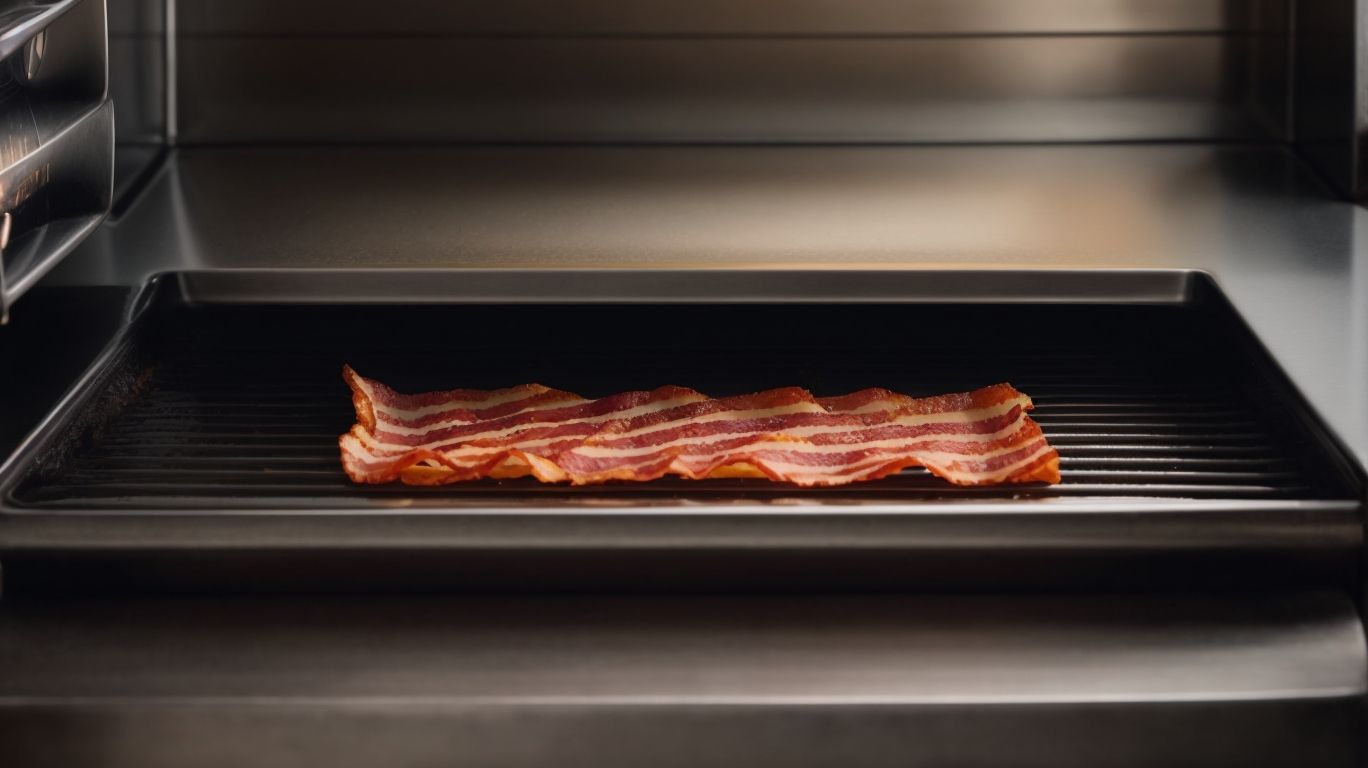
Credits: Poormet.Com – Thomas Martin
To cook perfect bacon in the oven, you’ll need to follow precise steps that result in crispy, delicious bacon slices within an optimal cooking time.
Baking bacon in the oven is a convenient and mess-free method that yields consistently great results. Preheat your oven to 400°F (200°C) and line a baking sheet with parchment paper or foil to minimize cleanup.
Next, lay out the bacon strips in a single layer, ensuring they don’t overlap.
Place the baking sheet in the oven on the middle rack and set a timer for 15-20 minutes, depending on your preferred level of crispiness. For extra crispy bacon, you can flip the strips halfway through the cooking process.
Once your bacon reaches the desired level of crispiness, remove it from the oven and transfer it to a plate lined with paper towels to drain excess grease. Let it cool for a few minutes before serving, and enjoy the perfect oven-baked bacon!
Preparing the Pan and Bacon
Preparing the pan and bacon for oven cooking involves selecting a suitable sheet pan, arranging the bacon slices, and managing the rendered bacon grease for optimal results.
When setting up the sheet pan for baking bacon, it’s important to line it with parchment paper or aluminum foil to prevent sticking and make cleanup easier. Position the bacon slices side by side on the pan, ensuring they don’t overlap to ensure even cooking. To address the grease accumulation, carefully tilt the pan to one side during cooking to allow the grease to pool away from the bacon slices.
Cooking Time and Temperature
Achieving perfect bacon in the oven requires adherence to recommended cooking times and temperatures, ensuring consistent crispy results every time.
For optimal bacon perfection, preheat your oven to 400°F (204°C) for that nice balance of crispiness and juiciness. Lay the bacon strips on a cool baking sheet to prevent sticking and ensure even cooking. Depending on the thickness of the bacon, bake it for approximately 15-20 minutes until the edges are golden brown. To avoid soggy bacon, consider placing a cooling rack on top of the baking sheet to allow the grease to drip away during cooking.
Tips for Crispy Bacon
Enhance the crispiness of your oven-baked bacon by using parchment paper on the baking sheet and managing rendered bacon grease effectively for optimal results.
To achieve that irresistible crunch, lay out the bacon strips on the parchment-lined baking sheet with ample space in between to allow for proper airflow. This ensures even cooking and prevents the bacon from steaming. Dabbing the strips with a paper towel before baking can help remove excess moisture, aiding in the crisping process. Be mindful of the oven temperature; a slightly higher temperature can help achieve that coveted crispy texture without overcooking. For an extra burst of flavor, consider adding a sprinkle of brown sugar or black pepper before baking.
How to Cook Perfect Bacon on the Stove?
Cooking perfect bacon on the stove involves precise temperature control, managing cooking times, and ensuring each strip turns out delightfully crispy.
When cooking bacon on the stovetop, start by placing the strips in a cold pan to prevent sticking. Then, gradually increase the heat to medium to render the fat slowly, resulting in a crispier texture. Monitor the bacon as it cooks, flipping it occasionally for even browning on both sides. For extra-crispy bacon, consider blotting excess grease with a paper towel before serving. By following these steps, you can enjoy deliciously crispy bacon straight from your stovetop.
Preparing the Pan and Bacon
Before cooking bacon on the stovetop, it’s essential to prepare the pan correctly, handle the bacon slices with care, and manage any rendered bacon grease during the process.
To get started, choose a pan that accommodates the amount of bacon you plan to cook, ensuring there’s enough space between the slices. Preheat the pan on medium heat before adding the bacon to ensure even cooking. Lay the bacon strips in a single layer to prevent them from sticking together. As the bacon sizzles, use tongs to turn the slices occasionally for uniform crispiness. To prevent grease splatters, consider partially covering the pan with a splatter guard.
Cooking Time and Temperature
Achieving crispy bacon on the stovetop requires precise control over cooking times and temperatures, ensuring each strip reaches the desired level of crispiness.
When cooking bacon on the stovetop, it’s essential to start with a cold pan to allow the fat to render slowly and create that perfect texture. Keeping the heat at a medium level ensures that the bacon cooks evenly without burning. Monitoring the cooking process is crucial; flipping the strips regularly helps achieve uniform crispiness.
Using a cooking thermometer to check the internal temperature of the bacon can prevent overcooking and maintain juiciness. Remember, there’s a fine line between crispy and burnt, so attentiveness is key to mastering this breakfast favorite.
Tips for Evenly Cooked Bacon
To ensure bacon cooks evenly on the stovetop, adjust cooking times based on thickness, manage bacon grease accumulation, and employ techniques that promote uniform cooking.
When cooking thin bacon slices, opt for a higher heat setting and shorter cooking time to prevent it from becoming overly crispy or burned. For thicker cuts, start with a lower heat to allow the fat to render slowly, ensuring a juicy and tender result.
Controlling the amount of bacon grease in the pan is crucial. Too much grease can lead to splattering and uneven cooking. Consider using a bacon press to flatten the slices, aiding in even cooking and reducing excess grease.
For consistent results, consider rotating the bacon strips halfway through cooking to ensure each piece receives equal heat exposure. This simple step can prevent undercooked or overcooked sections, resulting in uniformly cooked bacon every time.
How to Cook Perfect Bacon in the Microwave?
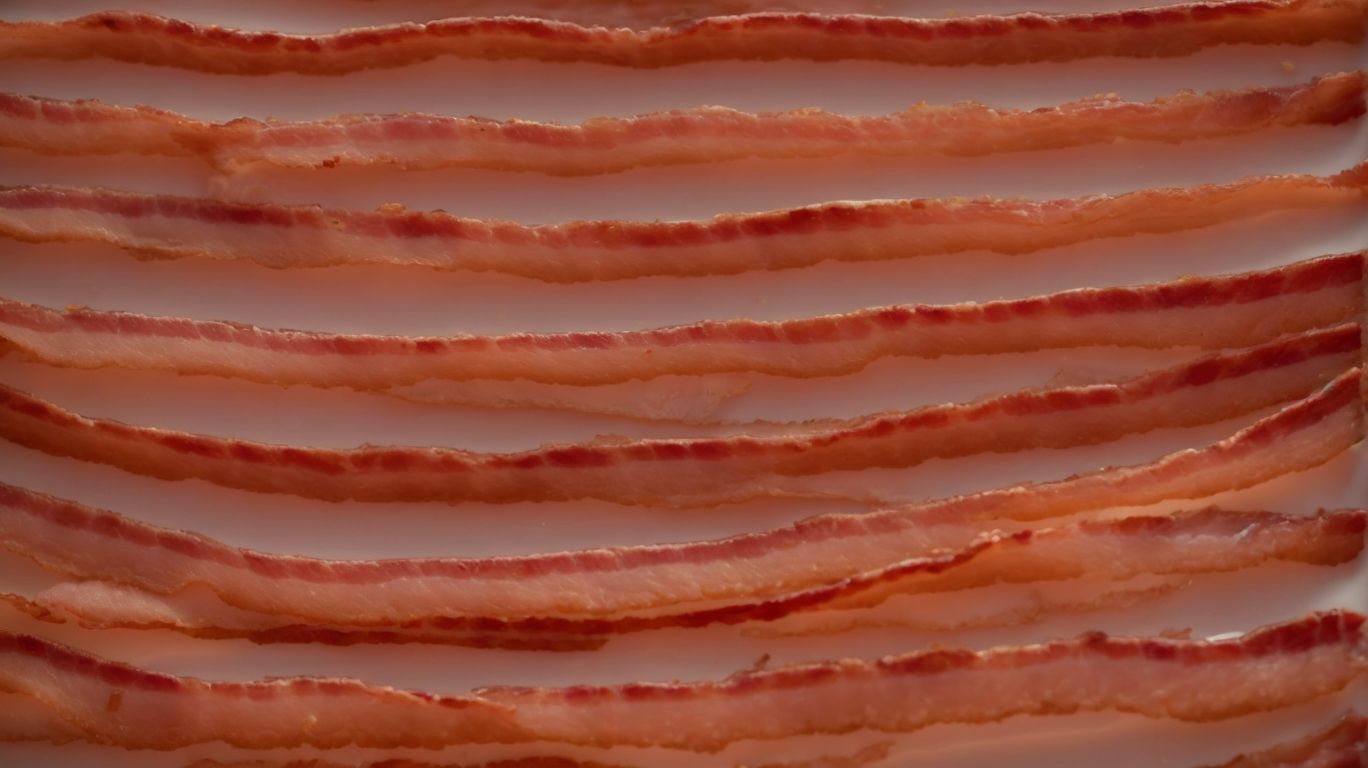
Credits: Poormet.Com – Peter Anderson
Cooking perfect bacon in the microwave involves precise timing, power level adjustments, and techniques that deliver crispy results suitable for various culinary creations.
Start by placing a few strips of bacon on a microwave-safe plate lined with paper towels to absorb excess grease. Adjust the cooking time based on the thickness of the bacon slices – typically 1 minute per slice for thin bacon or up to 2 minutes per slice for thicker cuts. Remember to flip the bacon halfway through the cooking process to ensure even crispiness on both sides.
Experiment with different power levels to find the perfect balance between cooking the bacon through and achieving that desired crisp texture. A medium to high power setting is usually recommended for faster cooking and more consistent results.
Preparing the Bacon
Preparing bacon for microwave cooking involves lining the dish with wax paper, adjusting cooking times for desired crispiness, and ensuring a flavorful outcome every time.
To begin the process, start by selecting your preferred type of bacon, whether it’s thick-cut or regular slices. Lay the strips side by side on the wax paper-lined dish to prevent sticking and ensure even cooking.
For extra flavor, consider sprinkling some brown sugar or black pepper on the bacon before microwaving. It’s also important to cover the bacon with another piece of wax paper to prevent splattering and maintain moisture.
Once you have all the preparations in place, carefully place the dish in the microwave, ensuring it rotates freely for even cooking.
Cooking Time and Power Level
Mastering the cooking time and power level settings is crucial for achieving perfectly crispy bacon in the microwave with consistent results.
Setting the microwave to a high power level can quickly cook the bacon but might make it too crispy. On the other hand, using a lower power level will require more time but can help prevent the bacon from becoming overly dry. Experimenting with different combinations of time and power is key to finding the right balance for your preferred texture.
Tips for Crispy Bacon in the Microwave
For crispy bacon in the microwave, consider adjusting cooking times, using optional cooking spray for added crispiness, and experimenting with different power levels for best results.
When aiming for that perfect crispy texture with microwave bacon, tweaking the cooking time can make a significant difference. Start by placing the bacon on a microwave-safe plate lined with paper towels to absorb excess grease. Spraying a light coat of cooking spray on the bacon before cooking can help enhance its crispness further, giving it that desired crunch. Test out various power levels on your microwave to find the optimal setting that yields the crispiest results without overcooking. Remember, a little experimentation can go a long way in achieving the ideal microwave bacon!
How to Use Perfect Bacon in Recipes?
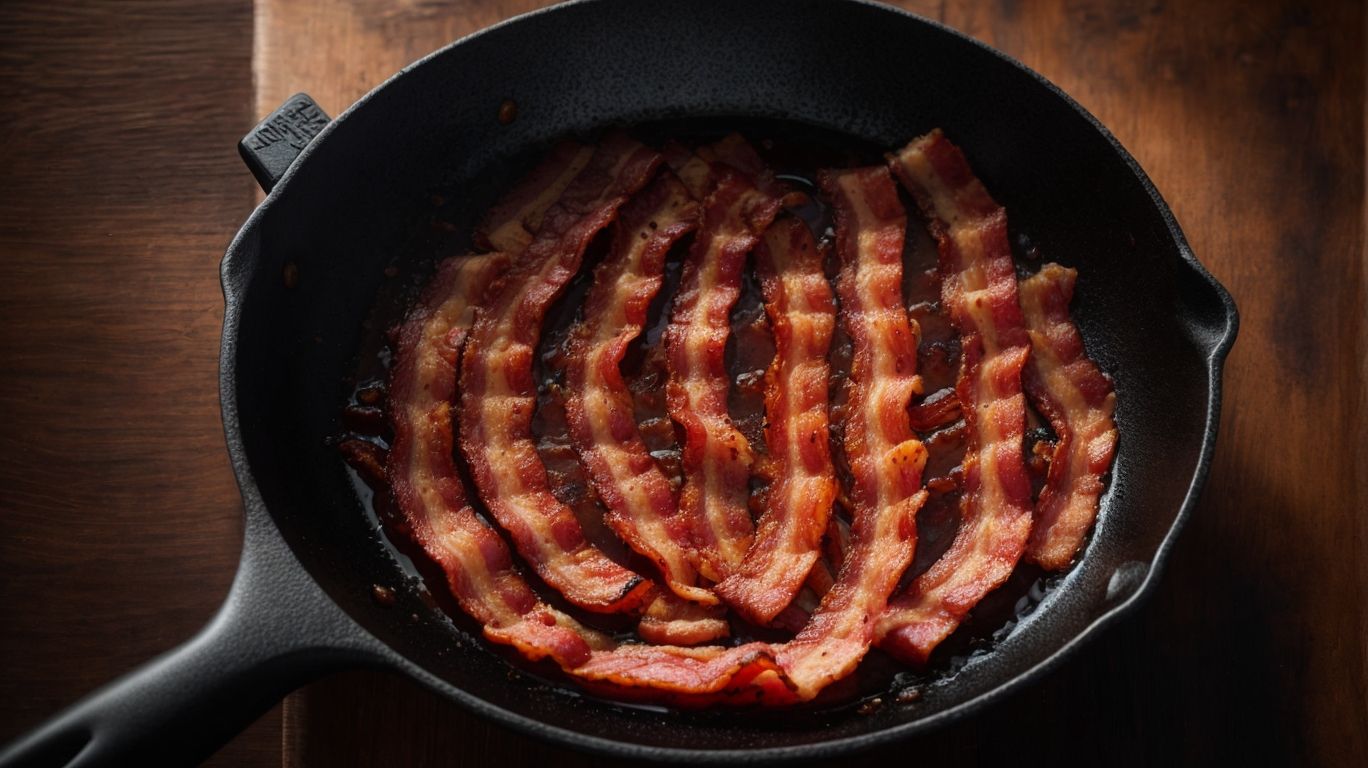
Credits: Poormet.Com – Logan Mitchell
Incorporating perfect bacon into recipes amplifies the flavor profile, adding a delectable touch to dishes such as bacon-wrapped delicacies, savory soups, refreshing salads, and hearty breakfast creations.
Imagine the crispy texture and smoky aroma of perfect bacon elevating classic dishes like bacon deviled eggs, providing a delightful crunch and rich taste in every bite. Not only does it enhance the flavor, but bacon can also serve as a versatile ingredient, whether as a topping for salads, bringing a savory contrast to the fresh greens, or as a garnish for soups, introducing a savory umami element to the comforting warmth of a bowl of soup.
When paired with breakfast favorites like scrambled eggs or stacked high on a breakfast sandwich, perfect bacon adds a hearty, satisfying element that complements the morning meal perfectly.
Bacon-Wrapped Dishes
Bacon-wrapped dishes offer a delightful culinary experience, combining the smoky flavor of bacon with various ingredients to create mouthwatering recipes.
One popular bacon-wrapped dish is bacon-wrapped dates, where sweet Medjool dates are stuffed with creamy goat cheese, wrapped in bacon, and baked until crispy. This sweet and savory combination is a crowd-pleaser, perfect for parties and gatherings.
Another favorite is bacon-wrapped asparagus, which showcases the crispy bacon complementing the tender asparagus spears.
For a spicy kick, try bacon-wrapped jalapeño poppers filled with cream cheese and wrapped with crispy bacon strips.
Adding Bacon to Soups and Salads
Integrating bacon into soups and salads elevates the taste profile of these dishes, infusing them with a savory richness that resonates with every bite.
Adding bacon to soups brings a depth of flavor, with its smoky and salty notes complementing a variety of ingredients like beans, potatoes, or vegetables. The rendered fat from the bacon also adds a luxurious silkiness to the broth, creating a velvety texture that enhances the overall mouthfeel.
In terms of salads, crispy bacon bits provide a satisfying crunch, contrasting with fresh greens and juicy tomatoes. The umami from the bacon enhances the salad dressing, making each forkful an explosion of flavor.
Incorporating Bacon into Breakfast Dishes
Bacon becomes a breakfast staple when incorporated into dishes such as eggs, pancakes, and breakfast sandwiches, enhancing the morning meal with its smoky and savory essence.
Its versatility allows it to be used as a crispy topping or a main ingredient in various breakfast creations. One popular choice is the classic bacon and eggs combo, where the crispy bacon complements the creamy eggs perfectly. For a sweet and savory twist, try incorporating bacon into maple syrup-drizzled pancakes, creating a delightful fusion of flavors.
Bacon can add a rich umami flavor to breakfast sandwiches, like the classic BLT. The saltiness of the bacon balanced with the freshness of lettuce and tomatoes makes each bite a satisfying experience.
Frequently Asked Questions
How to Cook Perfect Bacon?
1. What is the best way to cook bacon to achieve a perfect crispy texture?
The best way to achieve a perfect crispy texture when cooking bacon is to bake it in the oven. Preheat the oven to 400 degrees Fahrenheit and place the bacon strips on a baking sheet lined with parchment paper. Bake for 15-20 minutes, until the bacon is golden brown and crispy.
2. Can I achieve the perfect bacon without using any oil or fat?
Yes, you can achieve a perfect bacon without using any oil or fat by using a non-stick pan or by baking it in the oven. The natural fat from the bacon will render and provide enough oil for cooking.
3. How can I prevent bacon from curling up while cooking?
To prevent bacon from curling up, use a cast iron skillet or a heavy-bottomed pan. The weight of the pan will help keep the bacon flat while cooking. You can also use tongs to press down on the edges of the bacon as it cooks.
4. What is the ideal temperature to cook bacon?
The ideal temperature to cook bacon is medium-high heat. This will allow the bacon to cook evenly and prevent it from burning. If the heat is too low, the bacon will take longer to cook and may become chewy.
5. How do I know when bacon is cooked to perfection?
When the bacon turns a golden brown color and is crispy to the touch, it is cooked to perfection. You can also use a meat thermometer to check if the internal temperature of the bacon has reached 165 degrees Fahrenheit.
6. Can I store leftover cooked bacon for later use?
Yes, you can store leftover cooked bacon in an airtight container in the refrigerator for up to 3-4 days. Reheat it in the microwave or on a skillet for a few minutes before serving to restore its crispy texture.


